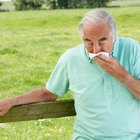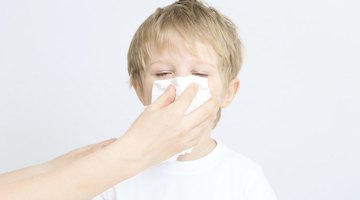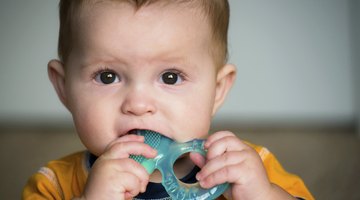Bad Breath & Fever in a Baby
Bad breath and a fever in a baby may seem like two unrelated symptoms, but various respiratory and sinus ailments can cause both. A fever requires careful monitoring by caregivers and a trip to a health care professional when the temperature reaches a certain level or persists despite attempts to lower it. Once the underlying cause of the fever is gone, the bad breath usually disappears as well.
Function of Post-Nasal Drip
Bad breath in an infant isn't caused by bacteria stuck on or between teeth the way it may be for older individuals. Instead, it is likely caused by post-nasal drip. Under normal conditions, the glands in the nose and throat produce continuous mucus, which helps fight off infection and moisten air that is inhaled. This mucus is swallowed unconsciously. When an infant is ill with a respiratory or sinus ailment the secretions can thicken causing bad breath, according to the American Academy of Otolaryngology -- Head and Neck Surgery.
Features During Illness

What Are Symptoms of Dust Pneumonia?
Learn More
When an infectious agent enters the body, various reactions occur to fight off the foreign agent. These include the elevation of the body temperature, thickening of mucus secretions and various other symptoms, depending on the underlying cause. DrGreene.com explains that a fever can make it more difficult for the virus or bacteria to reproduce. The thickened mucus and excess production can help expel the infectious agent from the body. When the mucus drainage thickens, it can cause an unpleasant breath odor.
Causes
Several different respiratory ailments can cause post-nasal drip and a fever. The common cold, caused by various viruses, can infect a baby of any age. DrGreene.com explains that older children rarely have a fever with a cold, but a baby can have a temperature between 100 and 102 degrees Fahrenheit. The flu, another common viral infection can cause post-nasal drip and a fever. When a cold persists for more than 10 days, the baby may have a sinus infection. Both a fever and bad breath are common symptoms associated with sinus infections in children and infants, according to KeepKidsHealthy.org. Additionally, infected or inflamed tonsils can cause bad breath, as well as a fever and other symptoms, KidsHealth.org points out.
Treatment

Home Remedies for Infants With Post Nasal Drip
Learn More
Many viral causes of a fever and bad breath in a baby must be left to run their course. Home remedies like the use of a humidifier, saline nasal drops and increasing fluid intake can thin the mucus and reduce bad breath. When a bacterial infection is present, a health care professional may prescribe an antibiotic for the baby.
Considerations
Vomiting or reflux that occurs with the flu or other illnesses can contribute to bad breath in an infant. This smell will be sour instead of foul, which is the way post-nasal drip makes the breath smell. Wiping the mouth out with a wet cloth can remedy this type of bad breath. Hoarseness, sore throat and trouble swallowing are other symptoms caused by post-nasal drip. An infant with these symptoms may have a dry or raspy cry that sounds like a barking seal. The baby may swallow hard or refuse to feed due to the discomfort associated with the throat.










